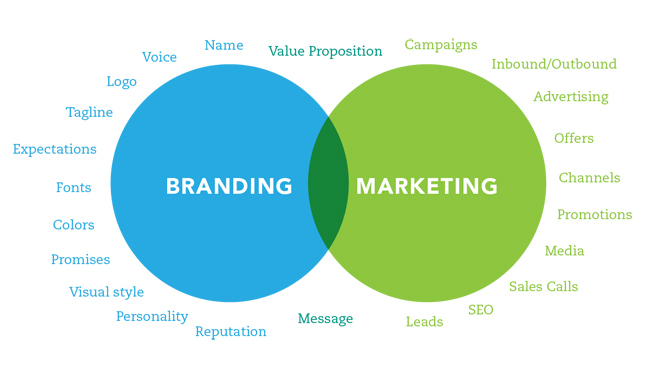Because of the overabundance of marketing communications on the internet, it is more difficult than ever to connect with potential clients. However, more marketing isn’t the answer; digital branding is.
The struggle for the attention of consumers has shifted to the world wide web. Ads no longer clog up shopping centers, periodicals, or mailboxes; instead, businesses compete for visibility on laptops, tablets, and smartphones.
Every month or week, businesses will send out email campaigns to their subscribers. Ad campaigns are conducted on websites, social media, and search engines on a regular basis.
Nowadays, businesses often use social media such as Instagram, Facebook, YouTube, and partner with social media influencers to promote their products and services.
From all the digital noise, customers have begun to ignore most marketing messages, deeming them fake, demanding, or uninteresting. As a result, your marketing and sales teams may be left scrambling to find new ways to bring in new consumers.
Fortunately, there is an easy remedy to this. Simply include digital branding into your overall marketing plan.
What Is The Objective of Digital Branding, and How Does It Work?
In digital branding, digital assets are used to build an online brand identity that may be conveyed on any digital channel, such as your website, social media profiles, digital advertisements, and content marketing.
When done correctly, digital branding may help you develop more effective digital marketing efforts and establish a strong online presence.
To What Extent Are Digital Marketing And Branding Related?
As a result, many people find it difficult to distinguish between digital marketing and digital branding because of their similarities.
The goal of digital marketing is to generate leads and then close sales. Meanwhile, the goal of digital branding is to foster consumer loyalty and increase sales.
The final aim is the same in both cases: to increase the number of customers while still keeping sales steady. Digital branding, on the other hand, takes a different approach. Instead of focusing just on the advantages of the product, the brand’s whole influence is demonstrated.
It conveys the brand’s underlying beliefs and culture, as well as the things it’s in business to sell, in an implicit way.
When It Comes To Digital Marketing And Branding, How Do They Work Together?
There comes a point at which digital branding and digital marketing overlap and impact one another.
Your digital brand is mostly built and maintained through digital marketing. Your brand’s image and values may be shared in online areas like Twitter, Facebook, and YouTube with the help of this tool.
However, you must first establish your digital brand in order for digital marketing to be as effective as it can be. As a result, digital branding provides your firm with a distinct personality and a distinct brand identity.
When your clients view one of your social media campaigns or Google adverts, they might see more than “simply an ad.”
Because of this, clients are more likely to stop and listen to what you have to say rather than hurriedly pressing the “skip ad” button when one of your YouTube advertisements breaks their viewing experience.
Marketing Through Digital Branding: Three Real-world Examples
With this structure in mind, it is difficult to imagine exactly how this may be implemented. Hence, we’ve put up a few instances to demonstrate how digital branding affects, and even elevates, digital marketing in the real world.
1. Adidas

For years, Adidas has been a go-to brand for athletes of all skill levels across a wide range of sports. However, the company’s client base is growing at an astronomical rate. And the reason for it is simple: in the previous five years, it has experienced a dramatic digital change in order to better serve consumers.
Rather than simply churning out product commercials like some of their smaller competitors, Adidas now creates thought-provoking campaigns that are aimed to engage emotionally with its clients.
Adidas, for example, began its #hometeam promotional campaign in early 2020 to create ties with clients while they were working from home.
The company’s concept that working together as a team can change the game was deeply ingrained in the campaign. As a consequence, they made their exercise applications available to anybody who wanted them for free.
Athletes from all around the world shared their inspiring stories of triumph on the site. In order to spread the word about the “Ready for Sport” campaign, Adidas even encouraged its staff to share the video on their own social media accounts and to tag the campaign in their own posts on Twitter and Instagram.
Not unexpectedly, Adidas’ new brand-centric strategy has resulted in huge success. #hometown has become one of Adidas’ most profitable and largest campaigns ever.
2. Amazon

Despite the fact that Amazon has always been a digital firm, they have not become sloppy or negligent in their approach to business over the years.
Amazon’s capacity to interact with customers has only improved as a result of the company’s expansion of its digital brand. When there is a worldwide crisis, for example, Amazon releases films of their charity efforts.
Using Amazon’s logo, products, and brand voice, these movies tie the effort to the company’s ideals while also showcasing the brand. There’s a lot going on here in terms of words, imagery, and music.
Despite this, not everything about Amazon is solemn and respectable. As a nod to consumers’ expectations of Amazon’s AI, Alexa, the company set up a series of accounts just for amusing messages and humorous exchanges.
Amazon has been able to retain a devoted consumer base for its global market and products because of this big and dedicated following on all Amazon-related social media sites.
3. Apple

Apple has always been a leader in the technology industry. All of Apple’s products are adored by the general public from their iPods to their laptop computers to their smartphones.
Apple, on the other hand, has never been satisfied with simply offering cutting-edge technology. They also incorporate their brand into all aspects of their work.
Their advertising has a contemporary, clean look with a few dashes of bright color. Their “Think Different” tagline is embodied in the way they use popular trends in novel ways.
By confirming their clients’ pain spots and delivering focused solutions, they also work hard to develop solid customer connections. Apple’s answer to customer worries about data privacy in a YouTube commercial is a typical example of this.
This commercial’s narrator employs normal language while addressing privacy, emphasizing personal information that people want to keep secret but also agreeing that such information should be kept private.
To make matters even more clear in only five lines, the advertisement makes it clear that Apple not only values its customers’ privacy but also works hard to keep it safe.
As the market is crowded with competing items, Apple is able to keep its devoted customers by openly expressing their anxieties, concerns and pain points in a sympathetic way and distinguishing themselves via branding.
Final Thoughts
Customers are already in digital environments; therefore, you need to meet them there. Digital marketing requires a digital brand in order to interact and communicate with clients and avoid being rejected or ignored.
Fortunately, there are a plethora of businesses from which you might draw inspiration. It’s only a matter of looking for them.




Ramon Kraus
In the digital age, branding and marketing are both essential for establishing a strong online presence and connecting with a global audience. Effective branding creates a memorable and consistent identity that distinguishes a company from its competitors, fostering customer loyalty and trust. Digital marketing leverages online platforms to reach target audiences with precision, utilizing tools such as social media, SEO, and content marketing to drive engagement and conversions. Integrating branding with digital marketing strategies ensures that messaging is cohesive across all channels, reinforcing brand values and enhancing visibility. Together, they enable businesses to build meaningful relationships with consumers, adapt to market trends, and achieve sustainable growth.